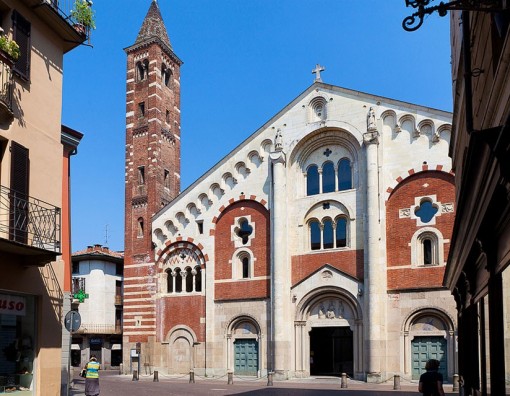Chiesa di Santa Maria Assunta22
The current building, constructed entirely in brick, dates to the 13th and 14th centuries. The gabled facade, marked by four buttresses, is typical of the Piedmontese and Lombard Gothic style, while the portal, with high terracotta cusped frame, recalls models that are more strictly Piedmontese. The interior is divided into three naves by five cross-shaped pillars; the lateral naves terminate in two straight walls, while the quadrangular cross-vaulted presbytery opens on the central nave. In the second half of the 15th century, the church was mostly frescoed by the painters of the Lombard school and by Manfredino Boxilio, the older of the two painter brothers from Tortona. Halfway down the left nave is the St. John the Evangelist altar, also known as Suffrage altar, richly decorated by stuccos, and completed by a painting depicting the "Crucifixion". The high altar in polychrome marble, typical product of Lombard workers, dates from the mid-18th century. A door on the right side of the presbytery leads to an ancient chapel, on which a bell tower was built in the late 16th century: the oldest layer of the pictorial decoration dating to the mid-15th century is found here. The altar of the Rosary, of significant artistic beauty for the presence of the frescoes of the Flemish, is located at the end of the right nave. The church was the object of important restoration work which began in 1929, due to serious static problems: in particular, the facade was detached from the bays and leaning towards the road. The problem was resolved with interventions in 1989-1990.
Information and contacts
via Roma, 22 - 15055 Pontecurone (AL)
Telephone: +39 (0131) 887.044
E-mail: parsantamariapontecurone@virgilio.it
Link
https://www.cittaecattedrali.it/it/bces/220-chiesa-di-santa-maria-assunta-pontecurone





